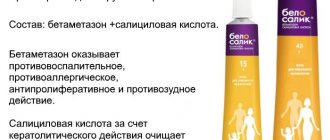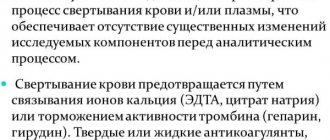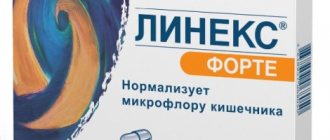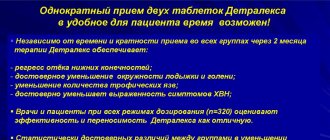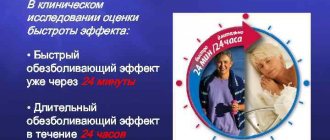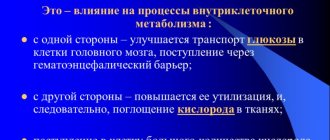There are restrictions during pregnancy
Has restrictions when breastfeeding
Has restrictions for children
Can be taken by older people
Has limitations for liver problems
Has limitations for kidney problems
Baneocin is an antibacterial agent of complex action, which has an effective effect in the treatment of skin infections of bacterial origin, varicose ulcers, burn injuries, contagious impetigo, mastitis, ENT diseases, vesicles caused by the simple herpes virus, herpes zoster (shingles), chickenpox, eczema.
It is also effective in the treatment of diaper dermatitis, weeping wounds and abrasions, as well as the prevention of umbilical infection. Used in dermatology after surgical removal of boils, carbuncles, and inflammation of the hair follicle, sweat glands, and periungual fold.
Baneocin has become widespread as a remedy that is used in the postoperative period for excision of scars and other tissues, as well as cauterization of the ovaries, in the treatment of perineal episiotomy or its ruptures. Therapy is based on the synergy of two antibiotics, aminoglycoside and polypeptide (neomycin and bacitracin). Baneocin is not as affordable as similar drugs, so cheaper analogues are popular today.
pharmachologic effect
Manufacturer: Sandoz, Switzerland
Release form: powder, ointment
Active ingredient: bacitracin, neomycin
Baneocin powder contains two active substances:
- Bacitracin is a polypeptide antibiotic that inhibits the formation of cell walls in bacteria. Mainly effective against gram-positive pathogenic microorganisms: streptococci, staphylococci and some gram-negative ones. Bacterial resistance to this antibiotic develops extremely rarely.
- Neomycin is an aminoglycoside antibiotic that inhibits the production of bacterial proteins. Sensitive to gram-positive and gram-negative bacterial microorganisms.
By combining two bactericidal substances, the broadest possible effect on various types of bacteria is achieved.
Is Baneocin an antibiotic or not?
Yes, the medication contains two antibacterial components.
Indications for use of Baneocin
Baneocin powder is used for:
- bacterial damage to certain areas of the skin due to chickenpox and herpes infection;
- eczema and varicose ulcers complicated by bacterial infection;
- infected diaper dermatitis;
- to prevent navel infection in newborns;
- infection of burns;
- in the period after surgical interventions as an additional means to prevent wound infection;
- wet seams.
Baneocin in ointment form is used for:
- local therapy and prevention of bacterial infection of affected skin areas;
- treatment of boils after surgical cleaning;
- treatment of abscesses after an incision;
- treatment of contagious impetigo;
- therapy for re-infection of eczema, surgical scar.
Baneocin's analogs
Cheap analogues of Baneocin ointment are also produced; they may differ in the active substance, but the pharmacological properties are identical. As a rule, these are Russian-made analogues. Substitutes may also differ in the form of release: solution, cream, ointment, powder; amount of use per day; age restrictions or contraindications.
The table shows analogues of Baneocin with prices and the country producing a similar medicine
| Analogue | Price, in rubles | Manufacturer country |
| Baneocin | 200-400 | Switzerland, Austria |
| Levomekol | 115-180 | Russia |
| Streptocide | 25-95 | Russia |
| Bepanten | 400-770 | Germany |
| Levosin | 70-80 | Ukraine Russia |
| Stellanin | 370-405 | Russia |
| Ranavexim | 77-93 | Russia |
| Fucidin | 480-510 | Denmark |
| Brilliant green solution | 7-30 | Russia |
| Betadine | 250-300 | Hungary |
| Oflomelid | 190-460 | Russia |
| Bactroban | 370-590 | Great Britain |
| Pimafukort | 550-580 | Italy |
| Solcoseryl | 400-725 | Switzerland |
| Fukortsin | 22-58 | Russia |
Ranavexim
Manufacturer: Avexima Siberia LLC, Russia
Release form: powder
Active ingredient: sulfonamide
Synonyms: Streptocide
Ranavexim powder is a domestic substitute for Baneocin powder. Produced in jars of 5 and 10 g. The analogue has bacteriostatic properties. The active substance is effective against most pathogenic microorganisms.
You can replace Baneocin powder in cases of inflammatory diseases of the skin and mucous parts of the body, complicated by bacteria sensitive to sulfanilamide.
When used externally, the analogue Ranavexim is applied to the affected area of the skin. For internal use, use in accordance with the age-specific doses indicated in the instructions for use.
Diamond green
Manufacturer: Samaramedprom OJSC, Russia
Release form: solution
Active ingredient: brilliant green
An alcohol solution of an analogue of Baneocin has a disinfecting effect. But with a bleeding wound, the effectiveness of the medication is significantly reduced.
Baneocin can be replaced in cases of pyoderma, abrasions, and for the treatment of postoperative scars. The Zelenka analogue is also used for the treatment of inflammatory diseases of the eyelid margins (blepharitis).
Today, Diamond Green is not as popular as it used to be. In Soviet times, this was the number one remedy for treating the navel of newborns.
Release forms and prices
Baneocin is produced in the form of powder and ointment for external use. The ointment is available in packages of 5 g and 20 g, and powder – 10 g. At the same time, Baneocin ointment costs an order of magnitude cheaper than powder, even in a dosage of 20 g.
The reason is that the ointment contains paraffin and lanolin, and the powder is made with the addition of corn starch. It is not always possible to replace powder with ointment, since it is more effective in treating weeping wounds and abrasions. The price of Baneocin powder is quite high, but sometimes it is possible to use its cheap analogues.
Effect of the drug
There are no products that fully correspond in composition and concentration of active ingredients to Baneocin. Neomycin, which contains neomycin sulfate, can be considered a partial analogue.
Streptocide can also be used as a local anesthetic. Gentamicin-AKOS, Lincomycin-AKOS, Fuzimet, Fucidin G, Gioxyzon, Oxycort, Belogent cream, Retinoic ointment, Rosamet, Salicylic acid, Akriderm Genta can be used as cheap analogues of Baneocin ointment. Let's take a closer look at the optimal product substitutes.
See also:
Why Actovegin ointment is prescribed and instructions for use of the drug
Gentamicin-AKOS
A broad-spectrum antibiotic that belongs to the group of aminoglycosides. The active component of the drug is gentamicin sulfate, which is effective against staphylococcus, streptococcus, Escherichia coli and Pseudomonas aeruginosa.
The bactericidal effect of Gentamicin is based on its ability to block the 30S ribosomal subunit, reduce the barrier functions of bacteria, which leads to disruption of protein synthesis and cell death.
Gentamicin-AKOS is produced in the form of an ointment and solution for intramuscular/intravenous injection. Gentamicin ointment is applied 3-4 times a day in a thin layer to the inflamed area. To enhance the effect, use a bandage. Duration of therapy is from a week to two weeks.
Gentamicin solution is administered at a rate of 3-5 mg/kg body weight per day, divided into 3 injections. With the intravenous method - once a day at a dosage of 160 mg. The duration of treatment is from 7 to 10 days.
The ointment is used for therapy:
- abscesses;
- cyst;
- wounds;
- ulcers;
- dermatitis;
- purulent infections;
- acne;
- boils;
- pyoderma;
- inflammation of the periungual fold;
- sycosis;
- folliculitis;
- burns.
The drug in solution form is used in the treatment of:
- sepsis;
- meningitis;
- encephalitis;
- bronchitis;
- pneumonia;
- purulent inflammatory processes;
- cystitis;
- pyelonephritis;
- abscess;
- osteomyelitis.
Use not recommended:
- for chronic kidney disease stages 3-5;
- neuritis of the auditory nerve;
- parkinsonism;
- pregnancy and breastfeeding;
- myasthenia gravis;
- for a child under 28 days of age or in case of prematurity.
Gentamicin can cause itching, rash, burning, angioedema, and fever. Unlike Baneocin, Gentamicin is not used in the treatment of weeping wounds or episiotomy.
Belogent cream
Belogent is an antibacterial drug of the aminoglycoside group with a wide range of action. Also suitable for the treatment of diseases of inflammatory and allergic origin. The active components of betamethasone dipropionate and gentamicin sulfate quickly act on the site of inflammation and reduce swelling, erythema, and lichenification phenomena. The cream is produced in dosages of 15, 20, 30 and 40 g.
Belogent is rubbed in a thin layer into the affected area twice a day. In places where the skin is thicker and the cream wears off faster, it is recommended to apply the product more often. The duration of therapy is no more than a month.
It is used for the relief of acute weeping and dry skin lesions:
- dermatitis of various origins;
- neurodermatitis;
- scaly lichen;
- seborrhea;
- impetigo;
- mosquito dermatosis;
- itching in the genital area.
Belogent should not be used if:
- chickenpox
- infections of viral origin;
- syphilis;
- skin tuberculosis;
- post-vaccination reactions;
- rosacea;
- the presence of open wounds and trophic ulcers;
- acne of hormonal origin;
- increased sensitivity to the components of the drug.
The drug is well tolerated. Rarely, itching, burning, swelling, acne, hypopigmentation, stretch marks and skin atrophy, excessive hair growth in the area of application of the product, and the appearance of vascular networks are possible. If it gets into the eyes, cataracts and glaucoma, exacerbation of herpetic and fungal infections may develop.
Unlike Baneocin, Belogent cream is contraindicated for chickenpox and trophic ulcers. The drug also has a lower incidence of side effects, which makes it more attractive to patients.
Retinoic ointment
Used for the treatment of acne. Due to the function of inhibiting the increased secretion of sebum, as well as reducing inflammation, it has an antiseborrheic effect, stabilizes the functioning of the sebaceous glands and significantly accelerates the healing process. The ointment softens keratinized areas of the skin, has an immunomodulatory and rejuvenating effect, evens out the complexion, fights pigment spots, and increases the elasticity of the epidermis. The active ingredient is isotretinoin (retinoic acid). Available in dosages of 10, 15, 20, 35 g.
Retinoic ointment is applied 1-2 times a day to dry, thoroughly cleansed skin in an even layer, leaving for 20 minutes until completely absorbed. Then wash it off or leave it on the skin. The duration of treatment is from a month to 1.5 months. The ointment can also be used rectally at a dose of 0.5-1 mg/kg once a day at night.
Duration of therapy is from 2 to 3 months.
Used to relieve symptoms and treat:
- acne,
- acne;
- comedones;
- seborrhea;
- rosacea;
- perioral dermatitis;
- severity of pigment spots;
- age-related skin changes.
Use not recommended:
- together with tetracycline antibiotics, hormonal drugs and other retinoids;
- during pregnancy and lactation;
- chronic kidney disease stage 3-5;
- severe liver dysfunction, pancreatitis;
- excess vitamin A;
- oncology;
- hyperlipidemia;
- inflammation of the rectum;
- hypersensitivity to the components of the drug.
The drug has many side effects. It is also not suitable for treating weeping wounds. The use of Retinoic ointment may cause:
- arterial and intracranial hypertension;
- headache;
- nausea;
- hearing loss;
- depression and nervousness;
- bleeding;
- anemia, increased ESR, changes in neutrophil volume, thrombocytosis;
- increased TG and glucose levels;
- increased liver function tests and hepatitis;
- cramps, pain in muscles, joints and hyperostosis;
- conjunctivitis, corneal clouding, photophobia, decreased night vision;
- colitis;
- allergies, the appearance of new rashes.
Rozamet
Antibacterial anti-acne agent. Has an antioxidant effect. The active ingredient is metronidazole. The mechanism of action is to reduce the production of oxidants by neutrophils, which lead to tissue damage to the inflammatory zone. Dosage – 25 g.
For inflammation of papules, pustules and erythema, the cream is applied to previously cleansed skin in the morning and evening. The interval between cleansing the skin and applying Rozamet should be 15-20 minutes. The duration of treatment is from 3 to 4 months.
For balanoposthitis and vulvaginitis, the cream is applied 1-2 times a day to the surface of the genital organs, in front of the vagina using a tampon. Course duration is 8-10 days.
Used for therapy:
- papular rashes;
- pustules;
- erythema;
- inflammation of the vagina and external genitalia in women and men.
There are no special contraindications for the use of Rozamet. Limitation is increased susceptibility to the components of the drug, 1st trimester of pregnancy and lactation. Side effects are rare and manifest themselves in the form of allergic reactions (tearing, burning and peeling of the skin)
Compared to Baneocin, Rozamet has a smaller list of diseases for which it is effective. Thus, it is mainly used to treat diseases of bacterial origin, therefore, unlike Baneocin, it has a therapeutic effect for balanoposthitis and vulvaginitis.
See also:
TOP 6 cheaper analogues of the drug Amoxiclav®
Salicylic acid
Antiseptic antimicrobial agent. When applied to the skin, it penetrates into the pores and helps exfoliate the dermis and remove excess sebum. This leads to the elimination of the source of inflammation. The active ingredient is salicylic acid. Available in the form of 1%, 2%, 5%, 10% alcohol solution with a volume of 10/25/40/100 ml and in powder form in bags of 10 g, 25 g, 50 g.
The product is most effective for the treatment of uncomplicated acne and acne. Treatment consists of applying a cotton swab directly to areas of inflammation 2-3 times a day. Course duration is from 2 weeks to 1 month.
Features of the drug
The product is effective for therapy:
- acne;
- pyoderma;
- psoriasis;
- black dots.
It can also be used to treat wounds with burns. The medication has no special contraindications. Limitation is increased susceptibility to the components of the product. The drug should not be used in conjunction with oral medications containing salicylic acid, retinoids and diacyl peroxides.
The side effects of methotrexate and the hypoglycemic effect of sulfonylurea-based antidiabetic agents may be enhanced. Use with caution during pregnancy. This medicine is not prescribed to children under 12 years of age.
Side effects do not occur often and can be expressed by keratolytic effects and the appearance of allergic reactions. With prolonged use, tinnitus, headaches, dizziness, nausea and vomiting, acidosis, rapid breathing and epigastric pain may occur.
Akriderm Genta
An antibacterial combined remedy that has a pronounced antiallergic and antibacterial effect, prevents the formation of inflammatory edema, reduces itching, and has a vasoconstrictor effect. The active ingredient is betamethasone dipropionate. Belongs to the group of aminoglycosides.
Effective against Pseudomonas aeruginosa and Escherichia coli, Proteus vulgaris, Friedlander's bacillus, group A streptococcus, staphylococcus. Available in the form of a cream or ointment in dosages of 15 g and 20 g.
Therapy consists of applying a thin layer of cream to the damaged areas 2 times a day in severe cases and 1 time in the lungs. The duration of the course is from 2 weeks to a month.
Akriderm Genta is recommended for therapy:
- dermatitis of various origins;
- diaper rash;
- diffuse and limited neurodermatitis;
- atopic eczema;
- coin-shaped eczema;
- childhood eczema;
- itching;
- psoriasis.
The cream should not be used:
- children under 1 year old;
- during lactation;
- on open wounds;
- for the treatment of herpes;
- with chickenpox;
- to relieve post-vaccination complications;
- for skin tuberculosis;
- with manifestations of syphilis on the skin.
Side effects are expressed in the form of a local allergic reaction, acne, dermatitis, inflammation of the hair follicle, extreme hair growth, weakening of skin pigmentation. With long-term treatment using bandages, swelling of the epidermis, prickly heat, skin atrophy, and the formation of small skin capillary hemorrhages are possible. Unlike Baneocin, Akriderm Genta is prohibited from being used on open wounds, such as chicken pox.
See also:
TOP 6 cheaper analogues and substitutes for Baziron and Baziron AS®
Baneocin or Levomekol - which heals wounds better
Manufacturer: Nizhpharm, Russia
Release form: ointment
Active ingredient: chloramphenicol, dioxomethyltetrahydropyrimidine
Synonyms: Levomethyl
Levomekol ointment is an analogue of Baneocin ointment. Also applies to combination drugs. Contains 2 components:
- chloramphenicol is an antibiotic that affects microbes of gram-positive and gram-negative origin (staphylococci, intestinal pathogens);
- dioxomethyltetrahydropyrimidine – has healing (regenerating) and anti-inflammatory properties. Used for slow-healing wounds, diaper rash, ulcers.
This analogue of Baneocin cream retains its antibacterial effect, even in the presence of purulent contents.
It is used for wounds with pus, affected by infection with a mixed environment, as well as in the first phase of the wound course.
Levomekol is used topically on the wound, after soaking a gauze pad or bandage with ointment. If necessary, it can be administered using a catheter and syringe into the wound. The ointment is used daily until the purulent masses in the wound completely disappear.
A cheap analogue of Levomekol for wound healing is also used for abscesses and boils. When compared with Baneocin, it is clear from the active ingredients that Levomekol is more effective for the treatment of slow-healing skin lesions, and Baneocin has a more pronounced antibacterial effect.
Baneocin: instructions for use. Cheap analogues of Baneocin
Today, the drug Baneocin is one of the most common drugs for the treatment of bacterial skin diseases.
It is used in many branches of medicine to treat skin diseases, burns, purulent wounds in adults, and is also successfully used to treat children.
What kind of drug is this and what are its indications and contraindications? About this in this article.
Baneocin: instructions
Baneocin is an antibacterial agent that is available in two forms: powder and ointment
.
Baneocin ointment is packaged in a tube and sold in a volume of 20 g
.
Baneocin powder is stored in plastic jars with a small tight-fitting lid and a hole for administering the medicine. The powder in the pharmacy can only be found weighing 10 g
, but, as practice shows, such a volume is quite economical.
Baneocin: composition
Baneocin ointment and powder consist of two main components:
- Both of these components
are antibiotics, they are quite strong and effective drugs, but they are rarely used separately - only when other drugs do not help. - These substances are used only topically and very carefully, since the application of neomycin and bacitracin to a large surface of the skin (and even more so to damaged tissue) causes systemic absorption and entry of antibiotics into the bloodstream.
- And this is very undesirable, especially for a child’s body.
- The fact is that the components of Baneocin are antibiotics that have a significant negative (toxic) effect on human kidneys.
